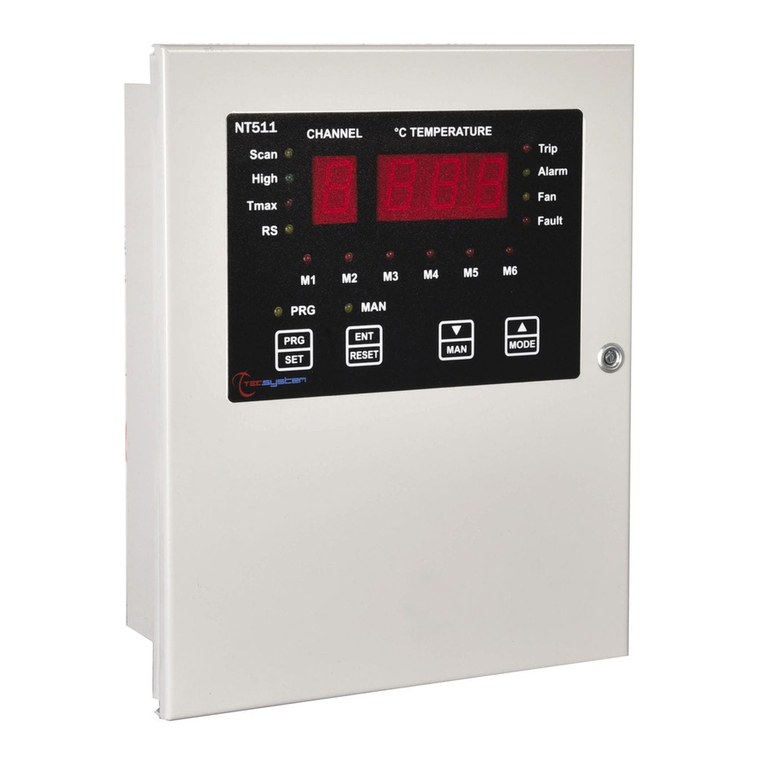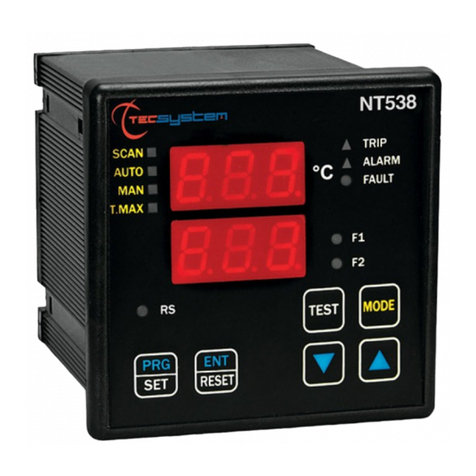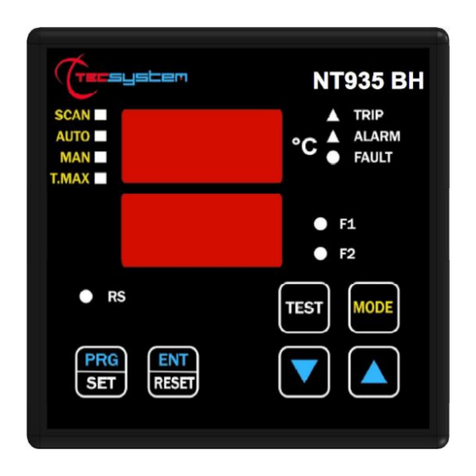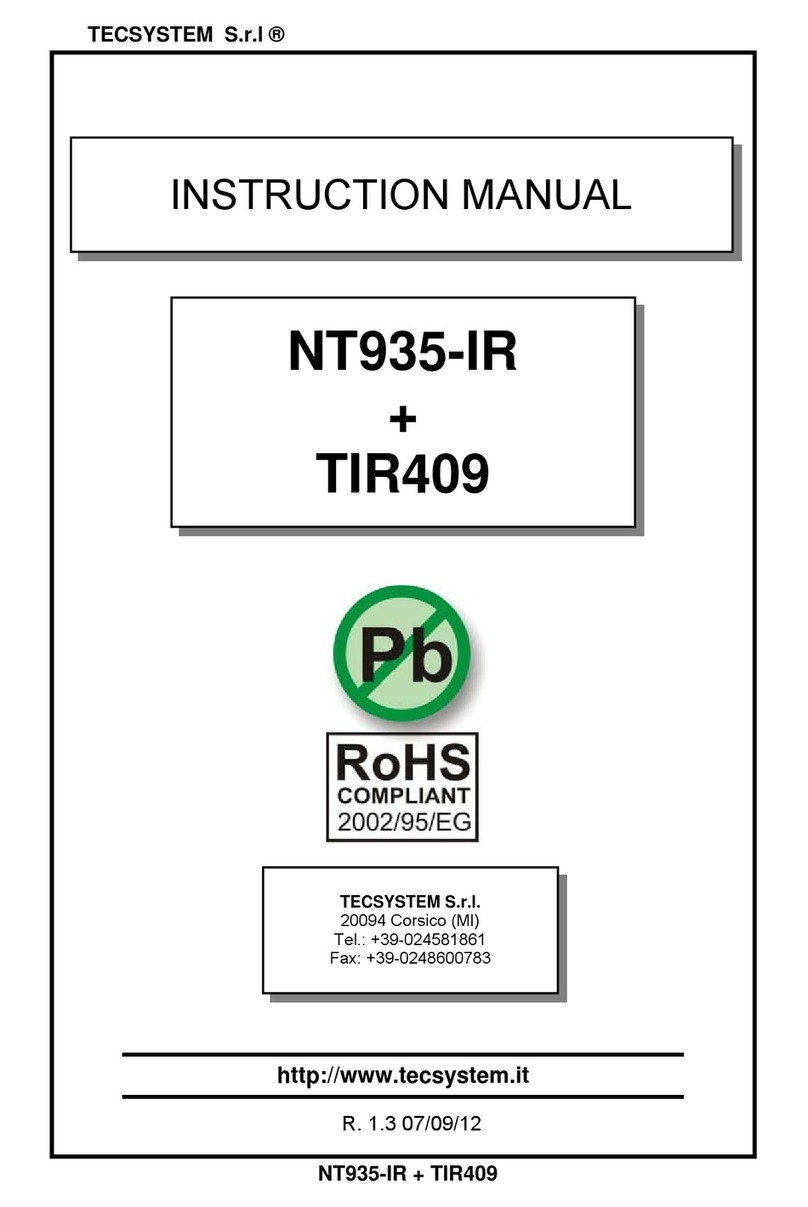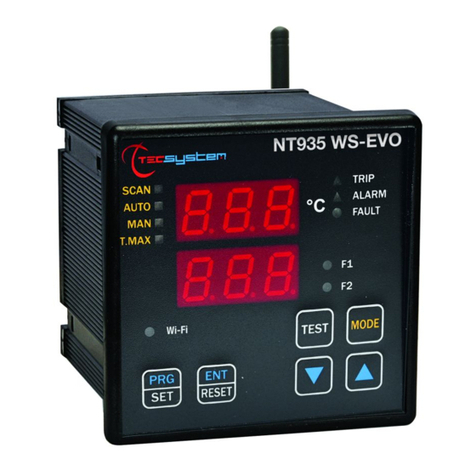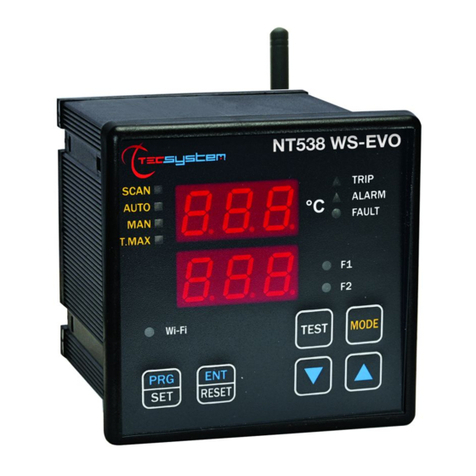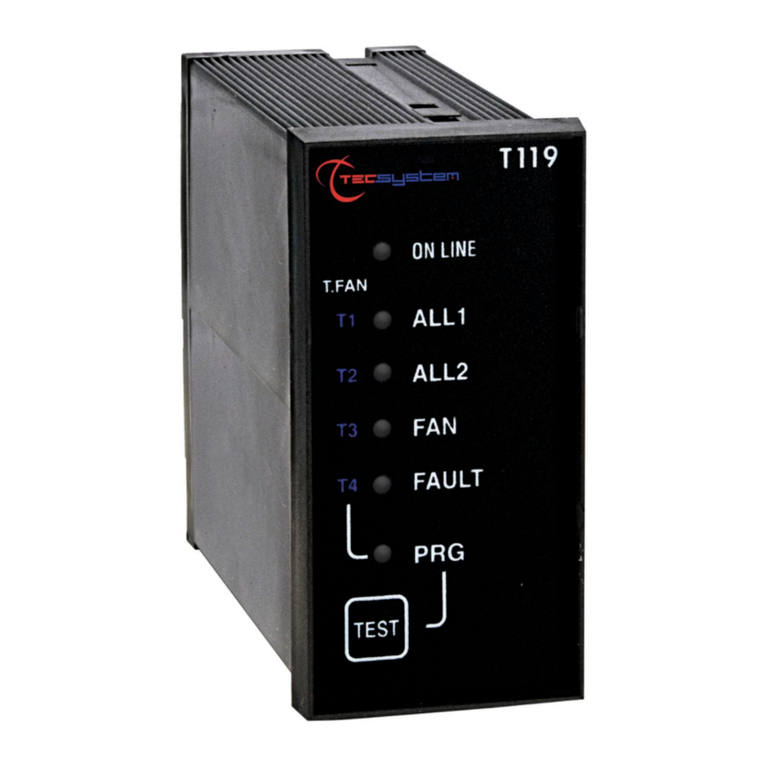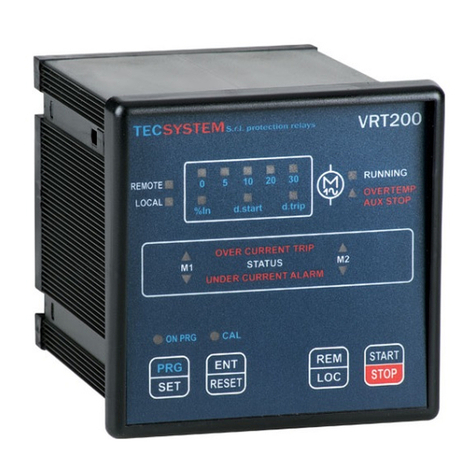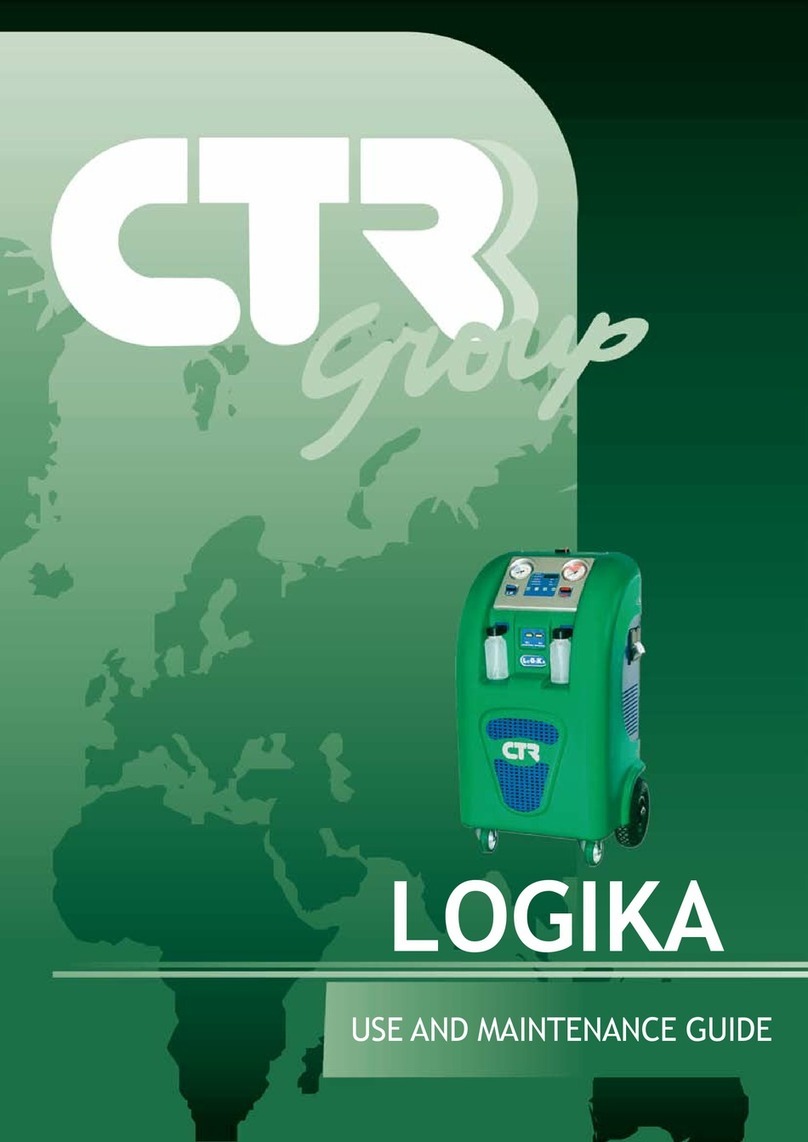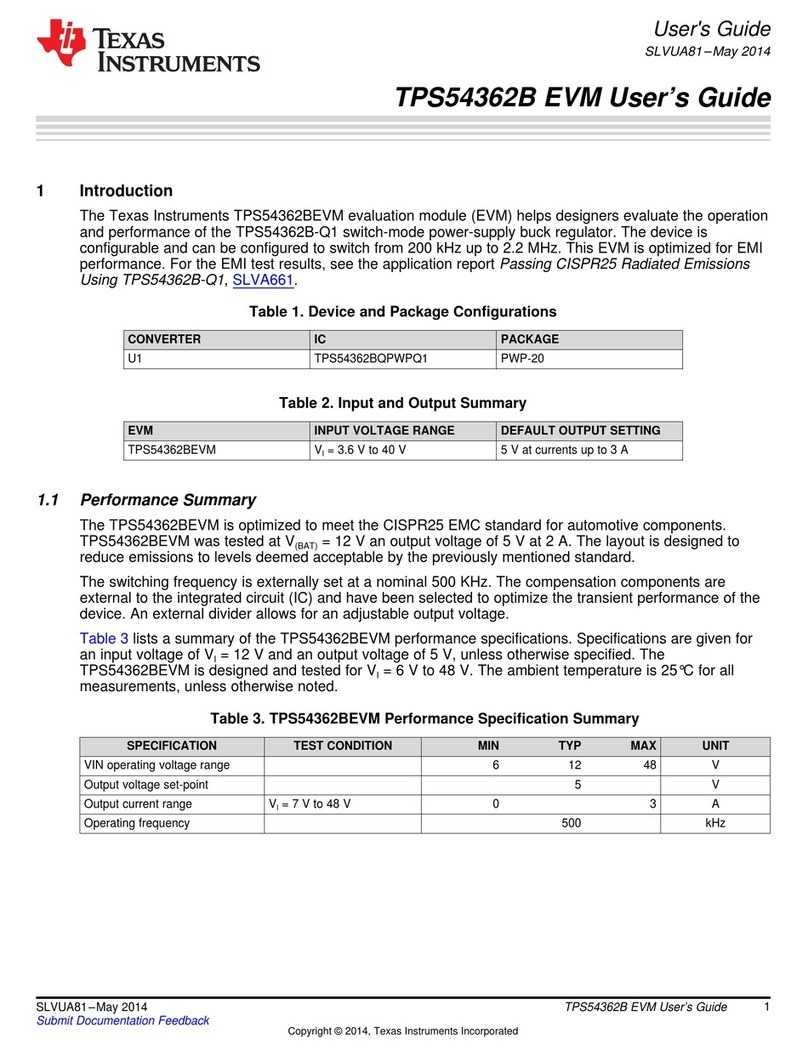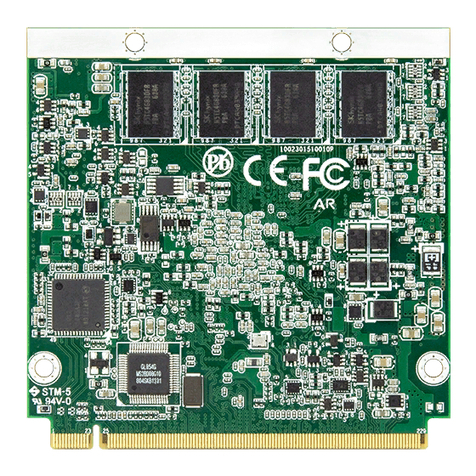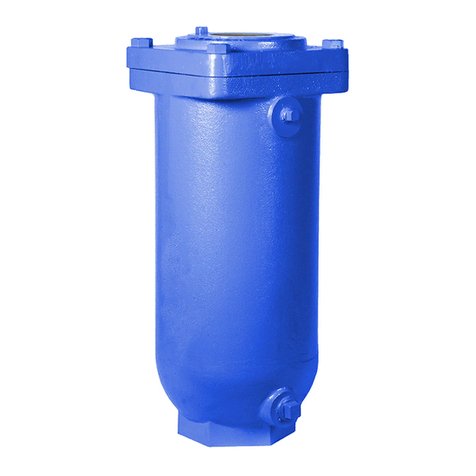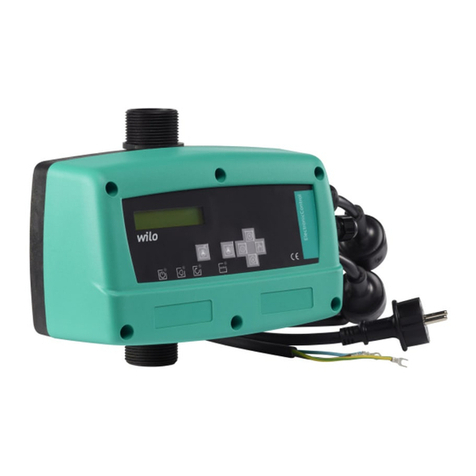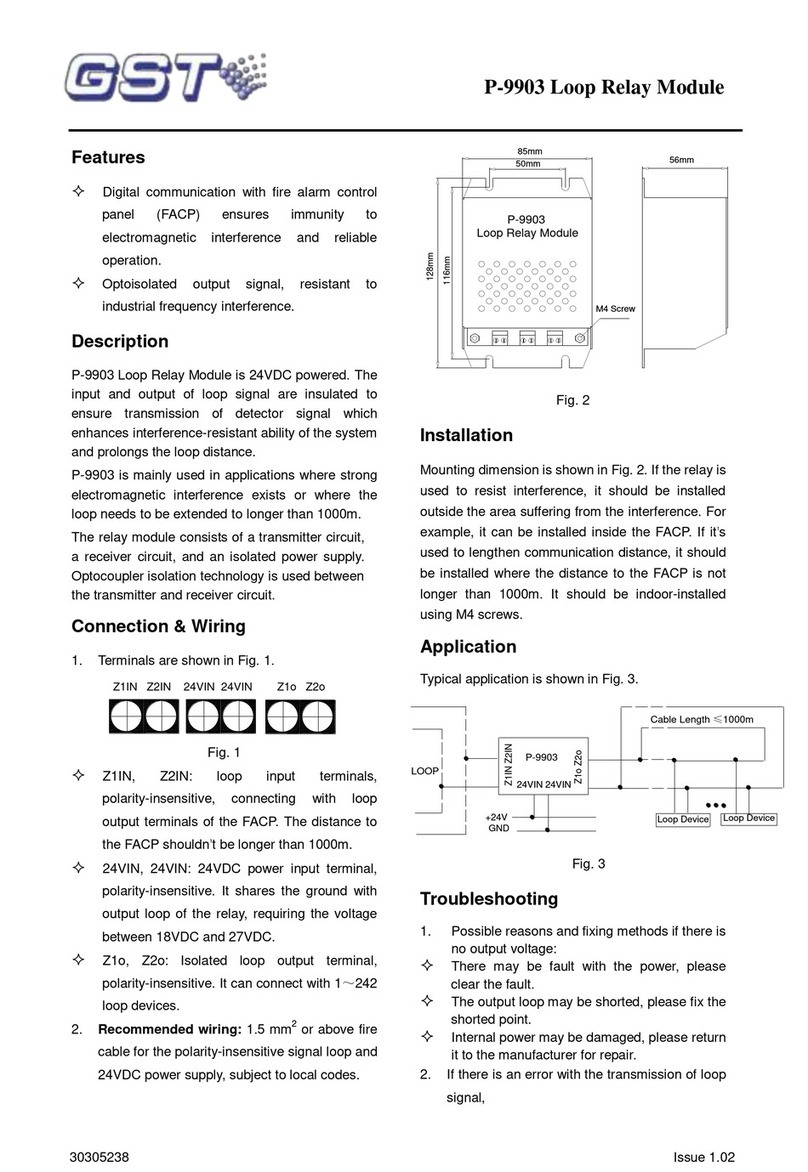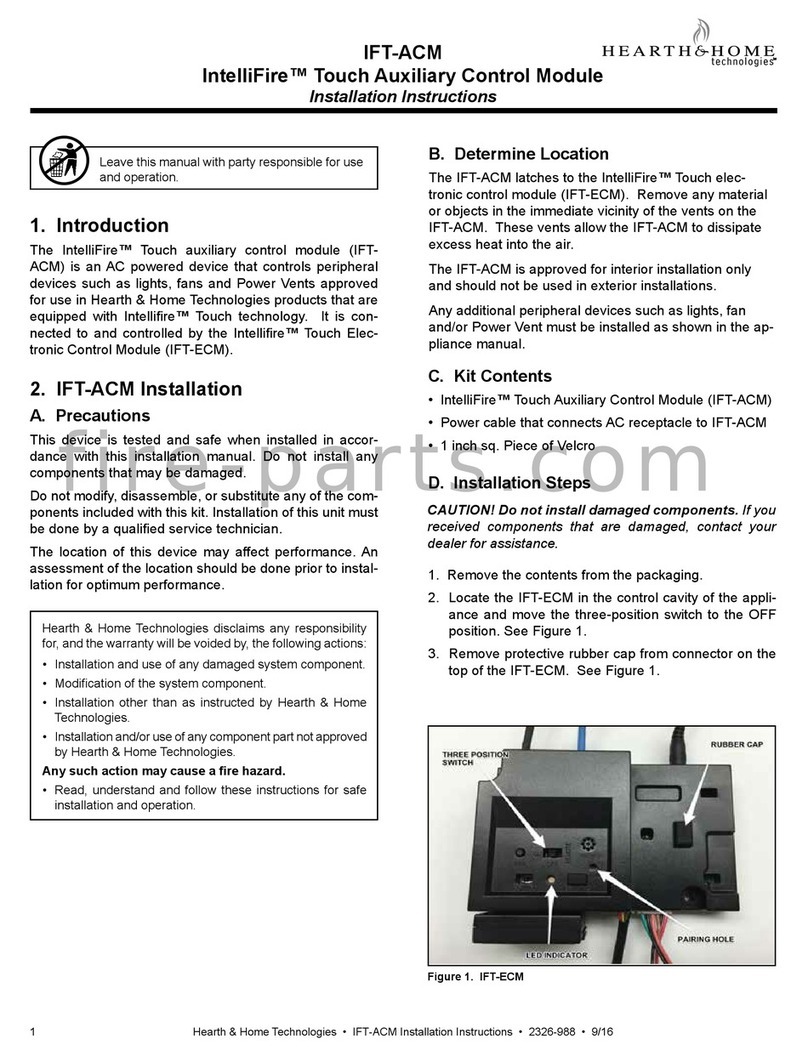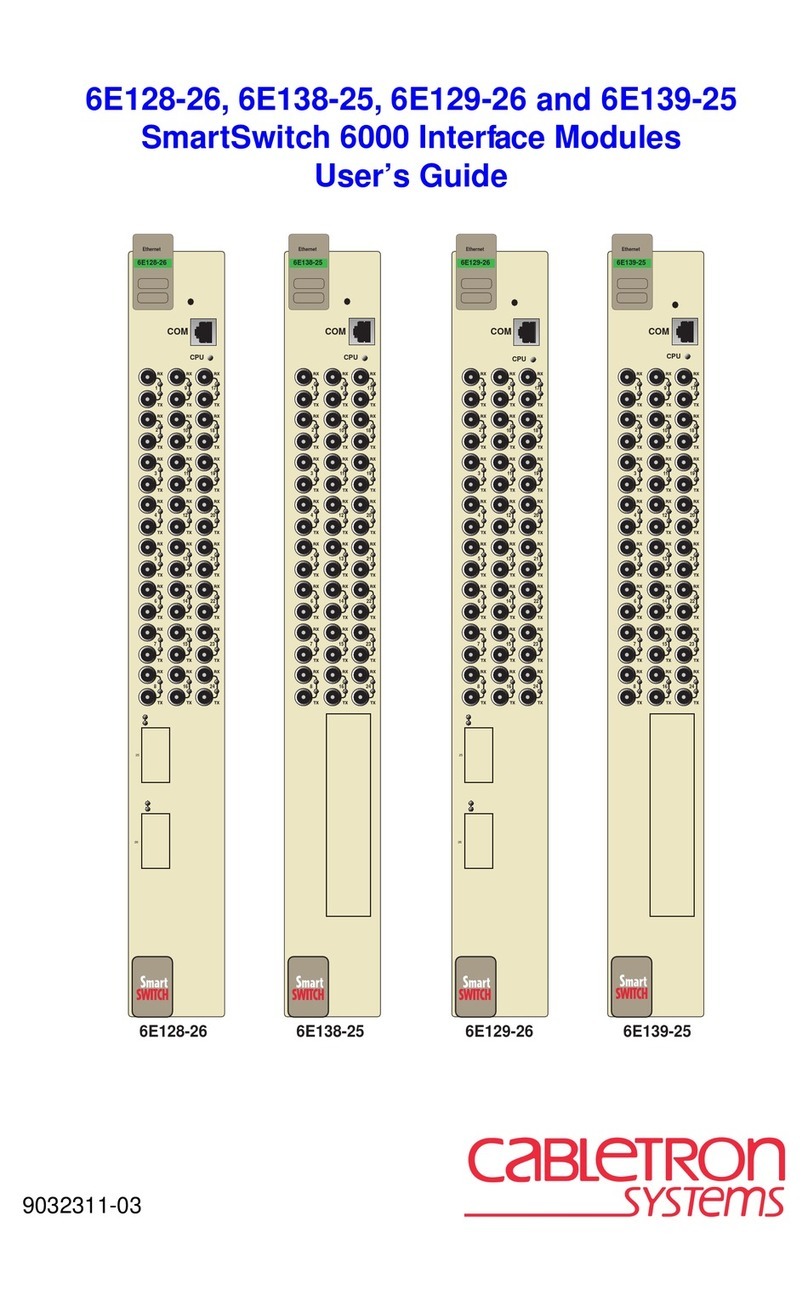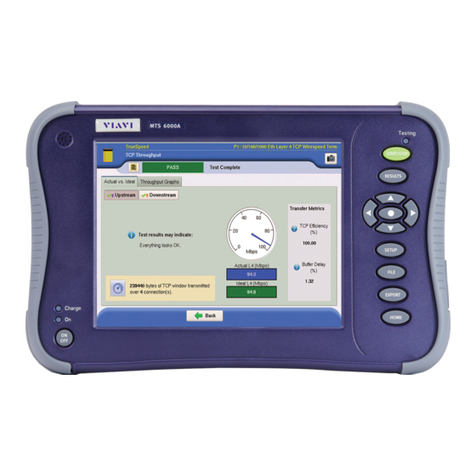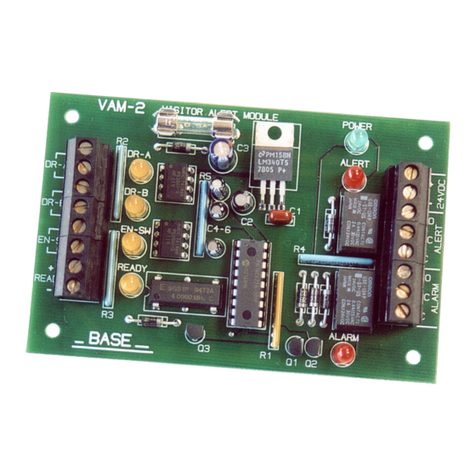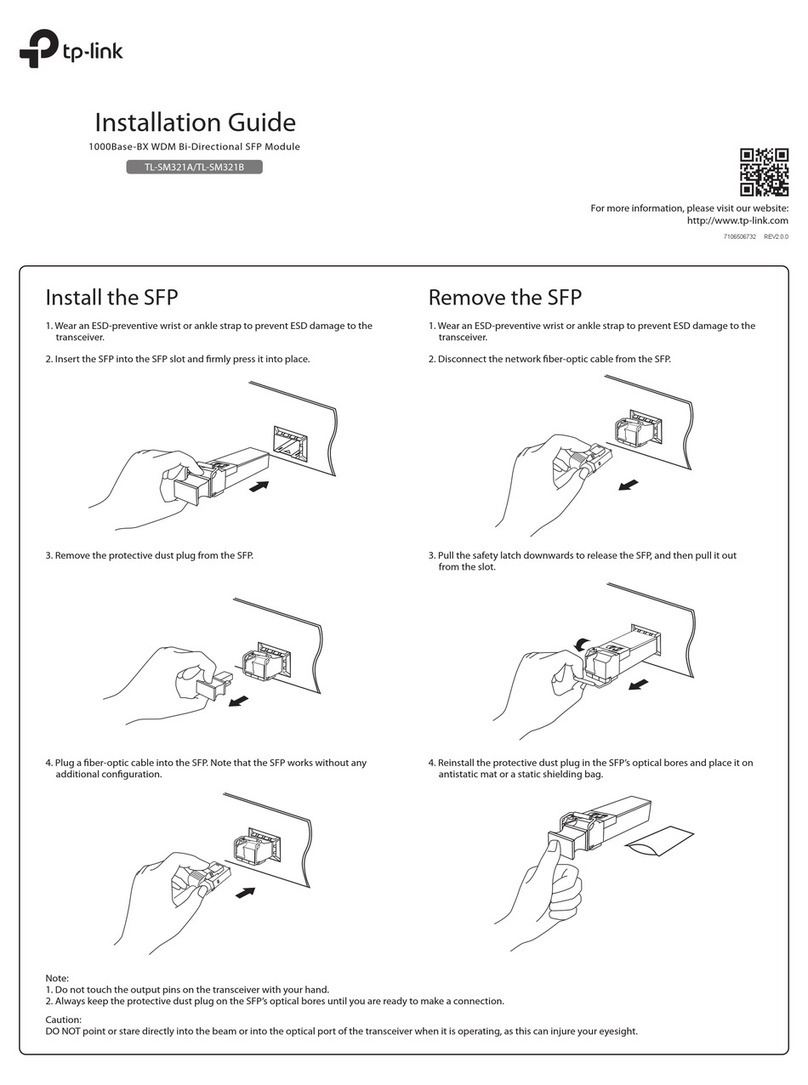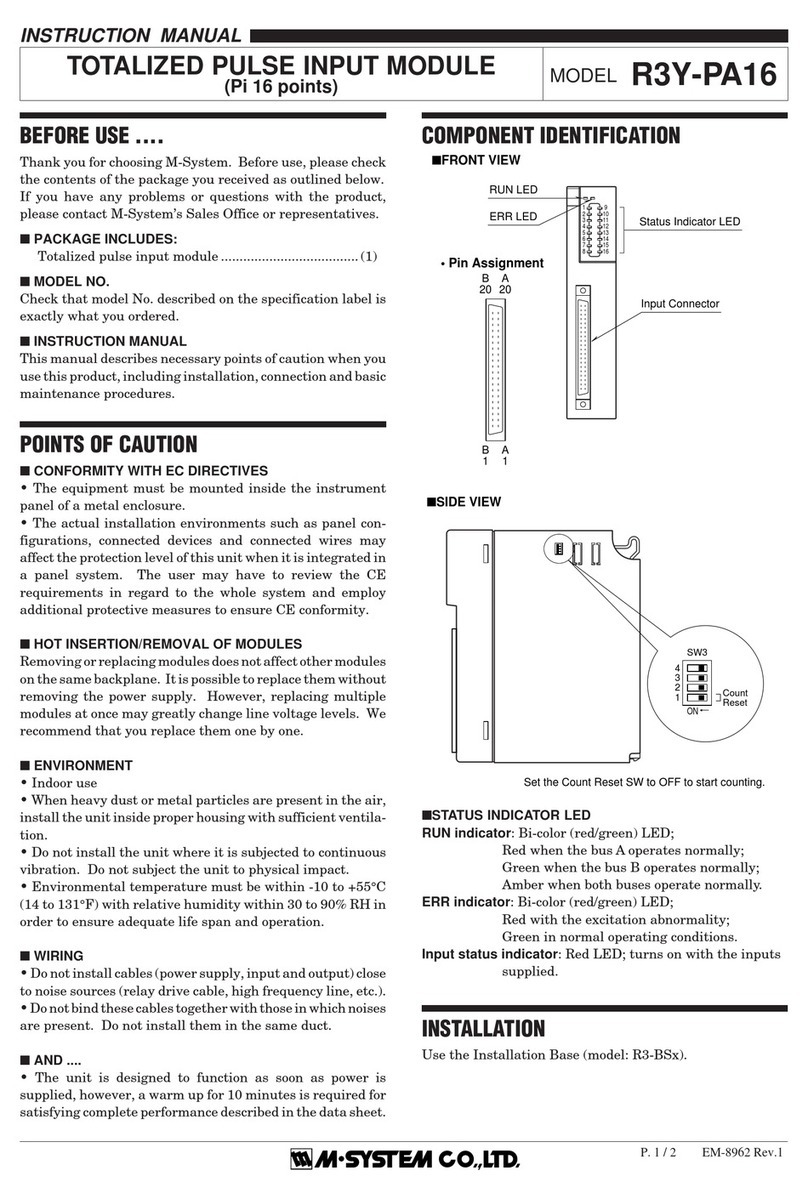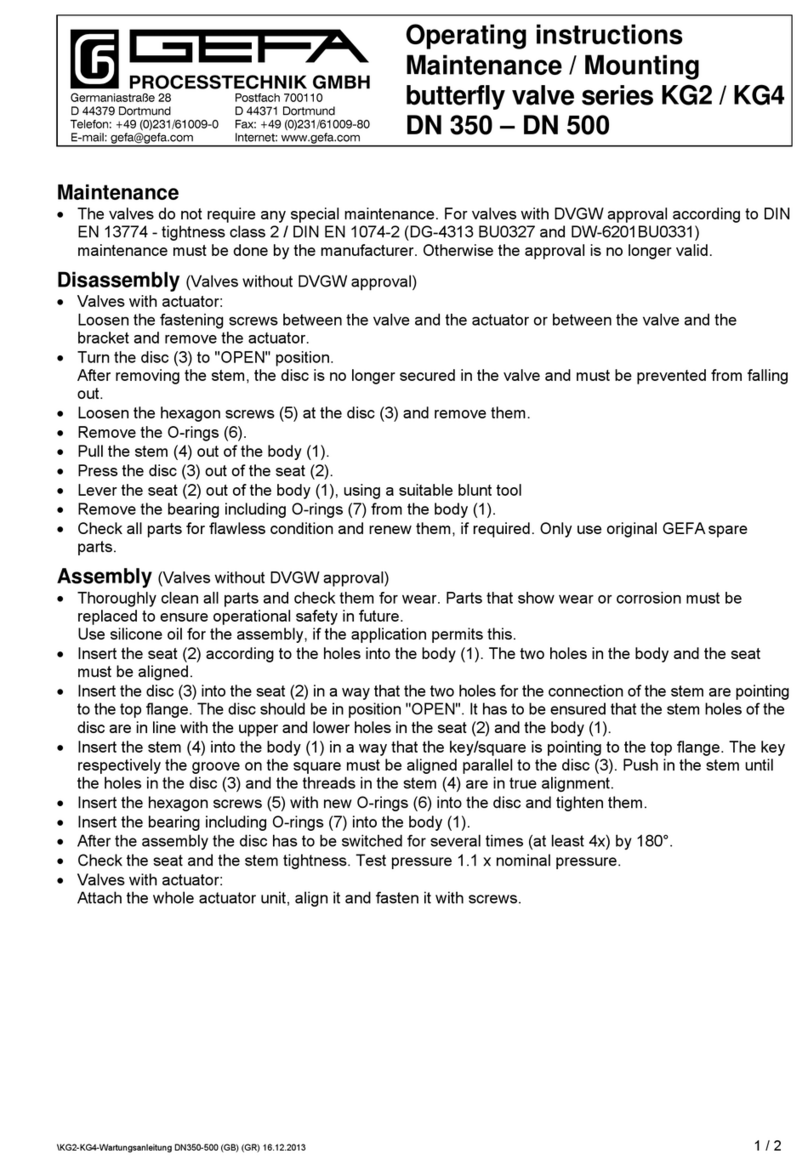DISPLAY
The first display is dedicated to temperatures.
The second display to the monitored channel.
When the device is turned on, or after a reset, the display always shows: the model of the T154 control unit, the type of probes,
the temperature range, the VER "00" indication (firmware version) and the identification code of the WS device (web server).
Pressing the MODE key, the display modes can be set:
•SCAN: the control unit shows in scanning (every 2 seconds) all the enabled (°C) and disabled (NO) channels.
•AUTO: the control unit displays the hottest channel automatically.
•MAN: manual reading of the channel temperature using the up/down keys
•T.MAX: The display shows the maximum temperature of the channel selected with the cursor keys. In the event of a fault,
the Tmax value is replaced with the type of fault stored (fcc-foc). Turning on the Trip Alarm-Fault LED warns of any events
that have occurred. The recordings are always successive to the moment in which the T.Max is reset (by pressing RESET).
OPERATING PROGRAM CONTROL
To control the protection levels programmed, press the PRG key twice to access the VIS programme. Repeatedly pressing the
PRG key, you can scroll through all the previously loaded values in sequence.
After 1 minute's keyboard inactivity, the programming display procedure is automatically abandoned.
To stop the display, press the ENT key.
NOTES ON SCAN AND MAN FUNCTIONS
During the SCAN and MAN modes, the operation of the T154 WS can be displayed.
1) RUN cPU:
This message appears upon ignition of the device.
2) Ech Err:
This message appears when damage in the EEPROM memory is detected.
Pressing Reset will cancel the message and restore the original default parameters, listed in the programming paragraph
on pages 13-14. Return the control unit to TECSYSTEM for repairs.
3) CAL Err:
This message appears when damage is found in the measurement circuit.
The temperature values displayed might be incorrect. Return the control unit to TECSYSTEM for repairs.
4) Pt Err:
This message appears when it is detected that one or more PT100 sensors are not working correctly, FOC, FCC and
FCD indications in the temperature sensor diagnostics paragraph on page 16.
In case of Err the FAULT relay will be de-energised.
The above messages will be displayed following the 1-2-3-4 priority stated.
in any display mode in case of faulty sensor failure (fcc, foc or fcd) the control unit will automatically set up in SCAN mode
(PRIVILEGED SCAN) allowing immediately displaying of the fault condition on the relative CHn channel (the Mode key is
disabled ).
LED TEST
We suggest carrying out the control unit LED test regularly.
For this operation, press the TEST key briefly; all the displays turn on for 2 seconds.
If one of the LEDS does not work, please return the control unit to TECSYSTEM for repair.
ALARM RELAY TEST
This function allows you to carry out a test of the relay operation without having to use further devices. To start the test
procedure, press and hold the TEST button for approximately 5 seconds: the TST indication appears for 2 seconds confirming
entry into the Relays Test mode.
L The LED that is lit shows the relay to be tested; use the cursors to select the desired relay.
Press the SET and RESET keys to energise and de-energise the relay to be tested; the display will show ON-OFF.
After 1 minute's keyboard inactivity, the RELAY TEST procedure will be automatically abandoned.
To stop the RELAY TEST procedure, press the TEST key.
Alternatively it is possible to use the PT100 model simulator: SIM PT100.
ATTENTION: Entering the relay test mode temporarily disables the failsafe function, relays with function
enabled switch (ALARM-TRIP-FAULT).
ALARM RELAY SILENCING
To silence the ALARM signal, press the RESET key: the relay will de-energise and the ALARM LED, which is on steady, will
start to flash. Silencing is automatically disabled when the temperature goes below the ALARM threshold.



















